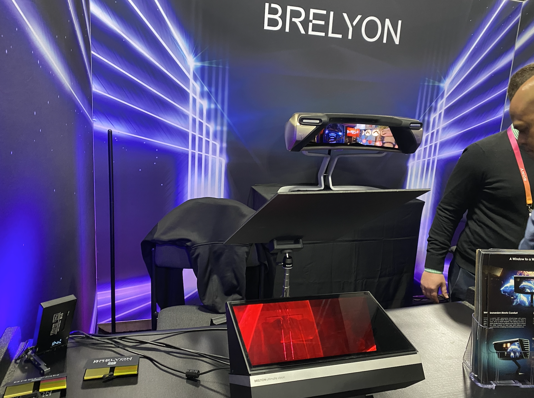Strategic Creativity is a Business Superpower

Strategic Creativity is a Business Superpower
05-10-2022Strategic Creativity is a Business Superpower

“Where’s Batman?”
Growing up, thanks to being named “Robin,” cheeky boys would inevitably ask me that question. Though I’m not that Robin, I do possess a superpower–strategic creativity. And I’m willing to share it with you.
People tout the power of creativity but there’s a rub. Artists have the luxury of being creative without being strategic. Businesses and brands do not.
Strategic creativity is the power to conceive something that solves a problem, anticipates issues, aims empathetically and appropriately at the target audience, resonates with the audience, and ultimately benefits people (and not just the brand or company), that is, does social good, offers a worthwhile functional or emotional benefit, a utility, information, or entertainment.Nobody notices meh solutions–pedestrian ideas and executions won’t get you anywhere except the unemployment line. With the insights into what it means to be strategically creative, you’ll be the business pro that the creative team will respect most and listen to—which would set you apart from your peers. You also need to know what will work –why it’s well-conceived, well designed, well-written and art directed. A marketing idea must L.A.S.T.:Lodestar: A “Lodestar” idea is your North Star—your mission and guiding light that makes each execution conceptually sound. Would your idea make people think or feel something? Change their point of view? Always remember to ask: How does the specific campaign idea interface with the brand’s Lodestar idea, overarching purpose, essence, and greater message?Attract: It must grab attention. For people to notice it, the solution must have outstanding art direction and copy. In other words, be unique, notable and appealing. If the creative solution is hackneyed, well…obviously it’s not going to stand out. Being risk-averse isn’t helpful in this context. The greatest risk is producing and distributing dull marketing, advertising, branding, or design.Shareworthy: People should find it remarkable, relatable, and relevant enough to themselves or their community to share it. Sharing is key.Tantalize: It should entice, engage, prompt, or move people to feel, think, ordo something. Which emotion do you want them to feel? Eliciting an emotion is critical to calling people to action.When you don’t employ strategic creativity, you run the greatest risk—a “creative” solution that draws a big yawn from the target audience, if they notice it all. There are lots of poor options out there—poor ideas, harebrained ideas, off-brand ideas, copycat solutions, safe “we did this before, so let’s do it again” ones, formulaic ideas, unremarkable design and art direction, dull copywriting, uninspiring brand stories, wrong concepts for the audience, poor executions, and the biggest sin of all—damaging ideas and executions. If you possess a superpower then you already understand that any marketing solution must do no harm to any member of society. In fact that means we work to include, uplift and respect everyone–people living with disabilities, people who are unsheltered, different socioeconomic groups, all races, ethnicities, gender identities, sexualities, religions, and ages.Strategically creative ideas and solutions build a better society.I’ve been watching Pennyworth, the origin story of Alfred Pennyworth, a former special-forces soldier living in London and how he came to work for Bruce Wayne, Batman’s father. From the storylines, I’ve witnessed a good deal of nimble thinking during challenging times. (And, I don’t in the least mind the camera’s intense focus on Jack Bannon.)I may not be Batman’s Robin, but you can think of me as your wingman, who is supplying strategic thinking, essentials necessary for commissioning and evaluating creative solutions.
As the Boy Wonder might exclaim,
Growing up, thanks to being named “Robin,” cheeky boys would inevitably ask me that question. Though I’m not that Robin, I do possess a superpower–strategic creativity. And I’m willing to share it with you.
People tout the power of creativity but there’s a rub. Artists have the luxury of being creative without being strategic. Businesses and brands do not.
Strategic creativity is the power to conceive something that solves a problem, anticipates issues, aims empathetically and appropriately at the target audience, resonates with the audience, and ultimately benefits people (and not just the brand or company), that is, does social good, offers a worthwhile functional or emotional benefit, a utility, information, or entertainment.Nobody notices meh solutions–pedestrian ideas and executions won’t get you anywhere except the unemployment line. With the insights into what it means to be strategically creative, you’ll be the business pro that the creative team will respect most and listen to—which would set you apart from your peers. You also need to know what will work –why it’s well-conceived, well designed, well-written and art directed. A marketing idea must L.A.S.T.:Lodestar: A “Lodestar” idea is your North Star—your mission and guiding light that makes each execution conceptually sound. Would your idea make people think or feel something? Change their point of view? Always remember to ask: How does the specific campaign idea interface with the brand’s Lodestar idea, overarching purpose, essence, and greater message?Attract: It must grab attention. For people to notice it, the solution must have outstanding art direction and copy. In other words, be unique, notable and appealing. If the creative solution is hackneyed, well…obviously it’s not going to stand out. Being risk-averse isn’t helpful in this context. The greatest risk is producing and distributing dull marketing, advertising, branding, or design.Shareworthy: People should find it remarkable, relatable, and relevant enough to themselves or their community to share it. Sharing is key.Tantalize: It should entice, engage, prompt, or move people to feel, think, ordo something. Which emotion do you want them to feel? Eliciting an emotion is critical to calling people to action.When you don’t employ strategic creativity, you run the greatest risk—a “creative” solution that draws a big yawn from the target audience, if they notice it all. There are lots of poor options out there—poor ideas, harebrained ideas, off-brand ideas, copycat solutions, safe “we did this before, so let’s do it again” ones, formulaic ideas, unremarkable design and art direction, dull copywriting, uninspiring brand stories, wrong concepts for the audience, poor executions, and the biggest sin of all—damaging ideas and executions. If you possess a superpower then you already understand that any marketing solution must do no harm to any member of society. In fact that means we work to include, uplift and respect everyone–people living with disabilities, people who are unsheltered, different socioeconomic groups, all races, ethnicities, gender identities, sexualities, religions, and ages.Strategically creative ideas and solutions build a better society.I’ve been watching Pennyworth, the origin story of Alfred Pennyworth, a former special-forces soldier living in London and how he came to work for Bruce Wayne, Batman’s father. From the storylines, I’ve witnessed a good deal of nimble thinking during challenging times. (And, I don’t in the least mind the camera’s intense focus on Jack Bannon.)I may not be Batman’s Robin, but you can think of me as your wingman, who is supplying strategic thinking, essentials necessary for commissioning and evaluating creative solutions.
As the Boy Wonder might exclaim,
Latest Post

03-01-2023
Machine learning in the digital age
18-10-2022
Freight News
11-10-2022
Best Business Schools In The World For 2023
 Top 10 Update
Top 10 Update 






